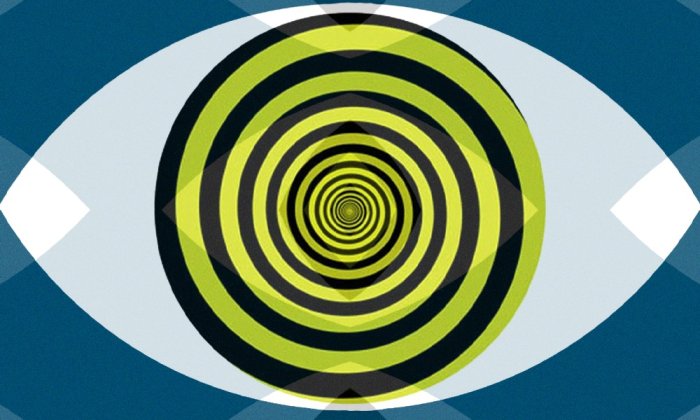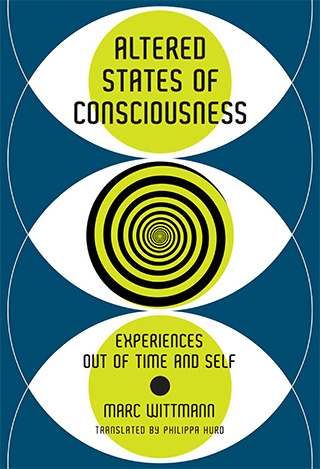Scientists Are Finally Taking Altered States of Consciousness Seriously

Through greater or lesser variations in consciousness we can learn a lot about the processes that underpin the self-conscious mind. However, for a long time extraordinary consciousness experiences have either been ignored by the mainstream natural sciences or have been explicitly denigrated as nonexistent — as the fantasies of cranks. In states of consciousness that are produced during spontaneous mystical experiences for some people, in experiences associated with meditative states, in drug experiences, in states of hypnosis or trance, and sometimes while listening to music, the perception of time and space is altered in extreme ways, as I document throughout my book “Altered States of Consciousness.”

In addition, notwithstanding the variability of such experiences and their circumstances, the accounts of people who have had extreme experiences, whether in situations of danger (near-death experiences) or in the face of particular neurological and psychiatric conditions, further suggest extraordinary states of consciousness wherein time, space, and the experience of self are intensely altered. These phenomena, too, were largely ignored by scientists in the second half of the 20th century because conventional scientific theories could not furnish any explanation. For example, the “ecstatic auras” of Fyodor Dostoevsky that preceded his epileptic attacks, which were associated with incredible feelings of happiness and harmony with himself and the world, have only recently become the subject of serious neurological research.
The “ecstatic auras” of Fyodor Dostoevsky that preceded his epileptic attacks have only recently become the subject of serious neurological research.
Times are changing. The very fact that in the past few decades the theme of consciousness itself has become a central topic for psychologists and neuroscientists signals a transformation in the scientific landscape. For example, it is said among distinguished brain researchers that just 30 years ago they dared not disclose that their actual research topic was consciousness — they had to say they were studying visual perception, or processes of attention. The prevailing advice was not to “out” yourself as a consciousness researcher before achieving permanent tenure of employment. Of course by then, psychology was no longer dominated by the kind of behaviorism that, with its stimulus-response models, rejected consciousness as superfluous. But even subsequent paradigms in the cognitive sciences had no need for the concept of consciousness. How much harder it was then for scientists who were researching “altered states of consciousness.” If consciousness itself was unworthy of attention, there was certainly no need to investigate altered states of consciousness.
Sociologists of science must take a close look at what has caused this turn toward an acceptance of the phenomena. There is, for example, the punishment of Ignaz Semmelweis in the 19th century, whose hygiene rules for hospitals were dismissed as “speculative nonsense,” although they merely dictated that after dissecting corpses doctors should wash their hands before attending births in the maternity wards. The Austro-Hungarian doctor had shown empirically that in wards where the doctors washed their hands, cases of puerperal fever decreased significantly. Semmelweis’s available empirical findings were simply ignored. A new generation of doctors would have to replace the old before the deadly puerperal fever could be combated effectively.
Had it been introduced just a few years earlier, research by the neurologist Olaf Blanke into out-of-body experiences would have probably been dismissed as “speculative nonsense.” Under experimental conditions, Blanke triggered an out-of-body experience in a female neurological patient at the University Hospital in Geneva. In 2002 he published his findings in Nature, one of the two most important natural science journals. During spontaneous out-of-body experiences, people have the impression that they can leave their body and float above it, observing themselves from above. Accident victims also report such experiences, as have some patients after a cardiac arrest (as can be read in the impressive accounts of Péter Nádas) who, to all appearances, were unconscious at the time of the out-of-body experience but who nevertheless can later recount their experience in detail. Patients report having “seen” the scene of the accident, and the procedures carried out by the paramedics and emergency doctors on their body, as it lay on the ground and they observed all this from above.
The patient described by Olaf Blanke and his colleagues had had electrodes implanted to evaluate her epileptic attacks by measuring the seizure activity in response to local stimulation, a procedure in which the patient remains fully conscious. Electrically stimulating the angular gyrus region on the right side of the brain led to selective perceptions of alterations in physical position. In the case of two stimulations, the patient reported a feeling of weightlessness and that she was around two meters above the bed, very close to the ceiling. The patient had no knowledge of which area had just been stimulated. These somatosensory experiences, of a type reported by people again and again, could thus be triggered experimentally and linked to processes in a narrowly circumscribed area of the brain. Of course this does not mean that out-of-body experiences are situated strictly locally in the right angular gyrus; but it suggests that this part of the brain is a significant factor in the occurrence of such experiences, in a way we do not completely understand.
Had it been introduced just a few years earlier, research by the neurologist Olaf Blanke into out-of-body experiences would have probably been dismissed as “speculative nonsense.”
Moreover, some of the stimulations produced the feeling of falling suddenly from a height. Many people are familiar with this sensation, as it sometimes happens shortly before falling asleep: You have the feeling of falling; you might even think you will fall out of bed onto the floor. But nothing has happened — you are still lying peacefully in bed. Olaf Blanke’s neurological research also provides clues to these better-known states of consciousness. This feeling of falling at the onset of sleep might also be traced to neural processes in the area of the angular gyrus, operating with some minor glitches. (Of course, the publication of these research results in a prestigious scientific journal was also due to the fact that the researchers were working with methods of brain research, making it more acceptable.)
This transformation in the sciences is also evident in contemporary research into the short-term and long-term effects of meditation. The practices of focused silence and contemplative prayer have existed for millennia. It is striking that over the last decade psychologists and brain researchers have more frequently addressed meditation as a research topic, and this work increasingly garners media attention. Meditation, as a form of psychological intervention, has even been incorporated into hospitals’ clinical practice. Research findings on the effects of meditation are clear: Just a few weeks’ practice of meditation improves performance in terms of attentiveness and short-term memory, effects that demonstrably accompany alterations in brain structure. It can also be seen that those who meditate perceive their bodies more intensively, achieve stronger emotional self-control, and in the long term experience more positive emotions. More important, however, in the context of my work, is the fact that people who meditate regularly have extraordinary consciousness experiences — of calmness of thought, or of the self being one with the world — during their meditation, sometimes even after a short time of practice; more frequently, however, after they have been meditating intensively for many years. For some years these experiences have also been recorded scientifically. For example, in a study that may call to mind disconcerting images, Carmelite nuns were examined using a brain scanner as they prayed, in order to identify the brain activity associated with a mystical communion with God.
But what has enabled such a shift in scientific approach, whereby these “speculative” phenomena more and more are being examined by mainstream researchers? Perhaps it is thanks to a new generation of researchers, who completed their education in a society — reflected in its universities — that is moving toward greater social and psychological openness. Perhaps linked to this new openness is the fact that more people who have had such intensive experiences have by now pursued scientific careers. The neurophilosopher Thomas Metzinger, who conducts research alongside Olaf Blanke, theoretically processing the results pertaining to the relationship between body and consciousness, had a few out-of-body experiences himself as a young adult — experiences that led to a search for answers.
Further, there are scientists whose own formative experiences, whether with meditation or with hallucinogens, influenced their choice of profession; some have gone on to investigate extraordinary states of consciousness. Of course, the employment of established methods of brain research in this work has been a factor in its growing acceptance in the scientific community as a whole. Ultimately, though, it is up to the researchers to first tackle the topic itself, then hold their ground in the arena of more traditional ideas and among entrenched academics who may not be so open to new ones.
“Openness to experience” is one of the five dominant human personality traits (the so-called Big Five). In his book “Consciousness Beyond Life,” Pim van Lommel shows how personality influences scientists to ignore phenomena, describing doctors’ attitude of denial toward the topic of near-death experience. The book recounts an episode that took place at a conference on the topic, when a doctor responded to a speaker:
“I’ve worked as a cardiologist for twenty-five years now, and I’ve never come across such absurd stories in my practice. I think this is complete nonsense; I don’t believe a word of it.” Whereupon another man stood up and said, “I’m one of your patients. A couple of years ago I survived a cardiac arrest and had an NDE, and you would be the last person I’d ever tell.”
Scientific dogmas and attitudes to life are scarcely ever changed through rational argument. Such shifts require life-changing experiences, of the “road to Damascus” kind, that affect the researcher emotionally. Toward the end of his life and after a heart attack, the logical positivist A. J. Ayer, whose philosophy might be summed up as “only what can be empirically proven and is factually and logically correct exists,” had a near-death experience that at least got him thinking. The London Sunday Telegraph gave Ayer’s description of his near-death experience the strapline “What I saw when I was dead.” If Ayer had previously been an avowed atheist, who assumed that there was nothing after an individual’s death, he now spoke more cautiously. He still remained an outstanding analyst, and reasoned that for a time after the cardiac arrest brain functions might still exist that could have produced these experiences. In his last essay, “Postscript to a Postmortem,” Ayer describes how, affected by his experience, he relinquished his polemical position against the belief in life after death in favor of a still skeptical but nevertheless more open-minded attitude. For him the idea of an afterlife was now at least worthy of research. And indeed for some years there has been vigorous research activity into near-death experience, which is published in the most important medical journals.
Even perhaps the most important sleep researcher had to undergo his own dramatic experience before he began to take dreams seriously and ascribe meaning to them.
Even perhaps the most important sleep researcher, it is said, had to undergo his own dramatic experience before he began to take dreams seriously and ascribe meaning to them. It is hard to believe, but Allan Hobson, the sleep researcher, discovered only toward the end of his career that “dreams are not just froth.” For his entire life as a researcher, Hobson had fought with great conviction and polemic against Sigmund Freud’s dream theory, repeatedly emphasizing the random and chaotic nature of dream contents. Then the accident happened: After a stroke affecting the brain stem, in a specific region that is linked to the sleep-wake cycle and which he himself had studied over the course of his career, Hobson was unable to sleep for eight days and did not dream for a month. This brought about a psychotic state in which he began to hallucinate the most incredible narratives. To his annoyance, however, no doctor was interested in the content of his “merely” subjective hallucinations. This life-changing experience motivated him to get involved more intensively and systematically with the subjective aspect of sleep and the substance of sleep consciousness. Only his own perspective was enough to convince him.
If we want to understand our consciousness — our subjectivity — then we must put aside our prejudices and transcend certain boundaries of our own creation. The American philosopher Thomas Nagel describes this attitude of mind in the introduction to his book “The View from Nowhere”:
I believe that the methods needed to understand ourselves do not yet exist. So my book contains a great deal of speculation about the world and how we fit into it. Some of it will seem wild, but the world is a strange place, and nothing but radical speculation gives us hope of coming up with any candidates for the truth.
I do not consider the ideas in my book to be radical speculation. I have brought together empirical findings from various branches of the sciences to form a whole. From this emerges a clear picture of the psychological and neuronal foundations of our time consciousness, as it is linked to our consciousness of self. From speculation we reach hypotheses. And, in the empirical sciences, hypotheses are there to be tested. This is the business of the researcher. To be continued.
Marc Wittmann is Research Fellow at the Institute for Frontier Areas of Psychology and Mental Health in Freiburg, Germany. He is the author of “Felt Time: The Psychology of How We Perceive Time” and “Altered States of Consciousness,” from which this article is excerpted.



